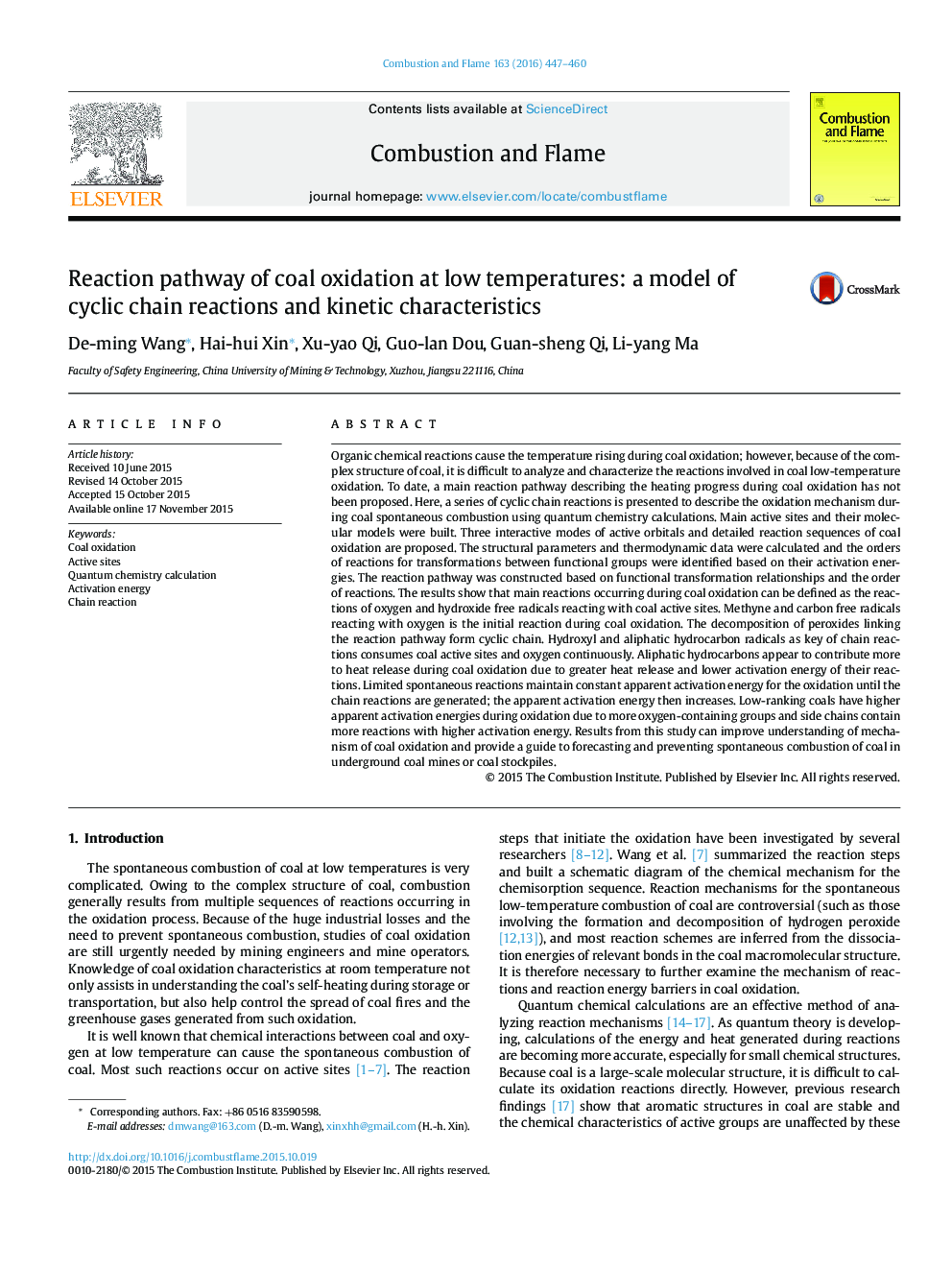| Article ID | Journal | Published Year | Pages | File Type |
|---|---|---|---|---|
| 6594374 | Combustion and Flame | 2016 | 14 Pages |
Abstract
Organic chemical reactions cause the temperature rising during coal oxidation; however, because of the complex structure of coal, it is difficult to analyze and characterize the reactions involved in coal low-temperature oxidation. To date, a main reaction pathway describing the heating progress during coal oxidation has not been proposed. Here, a series of cyclic chain reactions is presented to describe the oxidation mechanism during coal spontaneous combustion using quantum chemistry calculations. Main active sites and their molecular models were built. Three interactive modes of active orbitals and detailed reaction sequences of coal oxidation are proposed. The structural parameters and thermodynamic data were calculated and the orders of reactions for transformations between functional groups were identified based on their activation energies. The reaction pathway was constructed based on functional transformation relationships and the order of reactions. The results show that main reactions occurring during coal oxidation can be defined as the reactions of oxygen and hydroxide free radicals reacting with coal active sites. Methyne and carbon free radicals reacting with oxygen is the initial reaction during coal oxidation. The decomposition of peroxides linking the reaction pathway form cyclic chain. Hydroxyl and aliphatic hydrocarbon radicals as key of chain reactions consumes coal active sites and oxygen continuously. Aliphatic hydrocarbons appear to contribute more to heat release during coal oxidation due to greater heat release and lower activation energy of their reactions. Limited spontaneous reactions maintain constant apparent activation energy for the oxidation until the chain reactions are generated; the apparent activation energy then increases. Low-ranking coals have higher apparent activation energies during oxidation due to more oxygen-containing groups and side chains contain more reactions with higher activation energy. Results from this study can improve understanding of mechanism of coal oxidation and provide a guide to forecasting and preventing spontaneous combustion of coal in underground coal mines or coal stockpiles.
Related Topics
Physical Sciences and Engineering
Chemical Engineering
Chemical Engineering (General)
Authors
De-ming Wang, Hai-hui Xin, Xu-yao Qi, Guo-lan Dou, Guan-sheng Qi, Li-yang Ma,
